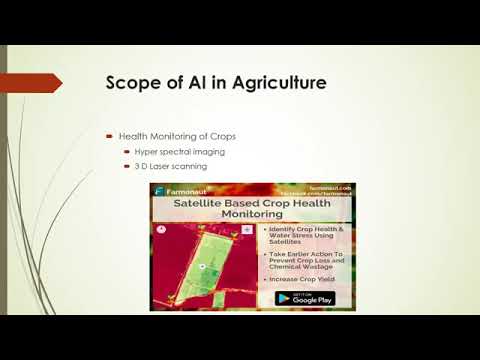USDA Ends Local Food for Schools Program: Impact on Student Nutrition and Sustainable Agriculture in Washington
“The USDA’s Local Food for Schools program connected over 1,000 schools with local farmers before its termination.”
In a stunning move that has sent shockwaves through education systems and agricultural communities nationwide, the U.S. Department of Agriculture (USDA) has announced the termination of its Local Food for Schools program. This decision has far-reaching implications for student nutrition, sustainable agriculture, and local food economies, particularly in Washington state. As we delve into this critical issue, we’ll explore the multifaceted impact of this policy shift on students, farmers, and communities across the United States.
Understanding the Local Food for Schools Program
The Local Food for Schools program, established in 2021 as a response to pandemic-related supply chain disruptions, was a cornerstone initiative that aimed to connect schools and childcare institutions with local agricultural producers. Funded by the USDA, this program facilitated direct purchases of fresh, local food and produce for student lunch trays, promoting healthier eating habits and supporting regional economies.
Active in approximately 40 states, the program enabled schools to provide students with access to fresher, often higher-quality food while simultaneously supporting local farmers and strengthening regional food systems. This symbiotic relationship between education and agriculture was not just about filling lunch trays; it was about nurturing a sustainable food ecosystem that benefited entire communities.

The Sudden Termination: A Blow to Sustainable Agriculture in Schools
The USDA’s decision to defund the program and terminate all existing Local Food for Schools agreements has left education officials scrambling. With a mere 60-day window before the agreements are officially terminated, schools now face the daunting prospect of reverting to traditional, often less localized, food supply chains. This abrupt shift threatens to disrupt not only the nutritional quality of student meals but also the economic stability of local agricultural communities that have come to rely on these farm-to-school initiatives.
Impact on Student Nutrition
The termination of the Local Food for Schools program raises serious concerns about the future of student nutrition. Here’s how this decision could affect the meals served in Washington’s schools:
- Reduced Access to Fresh Produce: Without direct connections to local farmers, schools may struggle to source fresh, seasonal fruits and vegetables.
- Decreased Nutritional Quality: The shift away from locally-sourced ingredients could lead to an increase in processed foods on school menus.
- Limited Variety: Local food programs often introduced students to a diverse array of regional produce, broadening their palates and nutritional intake.
- Potential Increase in Food Waste: Longer supply chains can result in less fresh food, potentially increasing food waste in school cafeterias.
The USDA school lunch program has long been a crucial source of nutrition for millions of students nationwide. The integration of local food initiatives within this framework had been seen as a significant step towards improving the quality and sustainability of these meals. Now, with the termination of the Local Food for Schools program, there’s a real risk of regressing to less nutritious options.
Economic Repercussions for Local Farmers
The impact of this decision extends far beyond school cafeterias. Local farmers and producers, who had come to rely on the steady demand from schools, now face an uncertain future. In Washington state, known for its rich agricultural heritage, the consequences could be particularly severe:
- Loss of Reliable Market: Schools represented a consistent, large-scale customer for many local farmers.
- Reduced Income: The termination of these agreements could lead to significant financial losses for small and medium-sized farms.
- Disrupted Supply Chains: Farmers may need to quickly find new markets for their produce, potentially leading to food waste and economic inefficiency.
- Threat to Sustainable Practices: The program encouraged sustainable farming practices; its loss could push farmers towards less sustainable methods to remain competitive.
Supporting local farmers through education initiatives was not just about economics; it was about building a resilient, sustainable local food system. The abrupt end of this program threatens to unravel years of progress in creating these vital connections between farms and schools.
Environmental Implications
The shift away from local sourcing also raises concerns about the environmental impact of school food supply chains. Here’s how the termination of the program could affect sustainability efforts:
- Increased Food Miles: Reverting to non-local suppliers could significantly increase the distance food travels to reach school cafeterias.
- Higher Carbon Footprint: Longer transportation routes mean increased greenhouse gas emissions associated with school meals.
- Packaging Waste: Local food often requires less packaging, especially when delivered fresh. A shift to more distant suppliers could lead to an increase in packaging waste.
- Loss of Educational Opportunities: Many schools used local food programs as a way to teach students about sustainable agriculture and environmental stewardship.
“Farm-to-school initiatives supported by the program impacted an estimated 30 million students nationwide.”
The environmental benefits of local food systems extend beyond reduced transportation emissions. They encourage biodiversity, support sustainable farming practices, and help maintain green spaces in and around urban areas. The loss of these benefits could have long-lasting effects on local ecosystems and community health.
Educational Impact Beyond Nutrition
The Local Food for Schools program was more than just a means of providing fresh meals; it was an educational tool that connected students to their local food systems. With its termination, schools lose valuable opportunities for hands-on learning:
- Agricultural Education: Many schools used local food programs to teach students about farming, food production, and agricultural careers.
- Nutrition Literacy: Exposure to a variety of local, fresh foods helped improve students’ understanding of nutrition and healthy eating habits.
- Community Connections: Farm-to-school initiatives often included field trips to local farms, fostering a sense of community and place-based education.
- Culinary Skills: Some schools incorporated local ingredients into cooking classes, teaching students valuable life skills.

The loss of these educational components could have long-term effects on students’ understanding of food systems, nutrition, and sustainability. It’s a setback not just for current students, but for future generations who may miss out on these valuable learning experiences.
Challenges for School Administrators
School administrators and nutrition directors now face significant challenges in maintaining the quality and sustainability of their food programs. Some of the immediate concerns include:
- Budget Reallocations: Schools may need to reallocate funds to accommodate potentially higher costs of non-local food sources.
- Menu Redesign: Nutrition directors will need to quickly redesign menus to account for the loss of local, seasonal ingredients.
- Supply Chain Restructuring: Schools must rapidly establish new supply chain relationships, potentially with larger, non-local distributors.
- Compliance with Nutrition Standards: Maintaining compliance with federal nutrition standards may become more challenging without access to fresh, local produce.
These challenges come at a time when many school districts are already grappling with budget constraints and staffing shortages. The added burden of restructuring food programs could strain resources and potentially impact other areas of education.
Community Response and Advocacy Efforts
The termination of the Local Food for Schools program has not gone unnoticed by communities across Washington and the nation. Various stakeholders are mobilizing to advocate for the reinstatement of federal funding:
- Parent-Teacher Associations: Many PTAs are organizing to voice their concerns about the potential decline in meal quality and loss of educational opportunities.
- Farmer Cooperatives: Local agricultural cooperatives are lobbying legislators to highlight the economic impact on rural communities.
- Nutrition Advocacy Groups: Organizations focused on child nutrition are raising awareness about the potential health consequences of this decision.
- Environmental Organizations: Sustainability-focused groups are emphasizing the environmental benefits of local food systems in schools.
These advocacy efforts are crucial in bringing attention to the multifaceted benefits of the Local Food for Schools program and the potential consequences of its termination. As the 60-day window for agreement termination approaches, these voices are becoming increasingly urgent and unified.
Potential Solutions and Alternatives
While the termination of federal funding presents significant challenges, some schools and communities are exploring alternative ways to maintain connections between local agriculture and school nutrition programs:
- State-Level Initiatives: Some states are considering implementing their own programs to fill the gap left by the federal program.
- Public-Private Partnerships: Schools are exploring partnerships with local businesses and foundations to support farm-to-school initiatives.
- Community Supported Agriculture (CSA) Programs: Some districts are investigating the possibility of participating in CSA programs to maintain access to local produce.
- School Gardens: Expanding school garden programs could provide a small but significant source of fresh produce for school meals.
While these alternatives may not fully replace the scale and impact of the federal program, they represent important efforts to maintain the progress made in connecting schools with local food systems.
The Role of Technology in Sustainable Agriculture
As schools and farmers grapple with the challenges posed by the termination of the Local Food for Schools program, technology is emerging as a potential solution to maintain efficient and sustainable agricultural practices. Advanced agricultural technologies can help farmers optimize their operations, potentially offsetting some of the losses from the program’s end.
One such technology solution is offered by Farmonaut, a pioneering agricultural technology company that provides advanced, satellite-based farm management solutions. While not directly involved in the school food program, Farmonaut’s platform offers valuable tools that could help local farmers adapt to changing market conditions:
- Satellite-Based Crop Health Monitoring: This technology allows farmers to monitor crop health remotely, optimizing resource use and potentially reducing costs.
- AI-Driven Advisory Systems: Personalized farm advice can help farmers make informed decisions about crop management, potentially increasing yields and efficiency.
- Resource Management Tools: These tools can help farmers optimize their operations, which could be crucial in finding new markets or increasing competitiveness.
While these technologies cannot replace the direct connection between schools and farms, they represent an opportunity for farmers to enhance their operations and potentially find new markets for their produce.
The Broader Implications for Sustainable Agriculture
The termination of the Local Food for Schools program raises broader questions about the future of sustainable agriculture in the United States. This decision could have ripple effects beyond just school cafeterias and local farms:
- Policy Priorities: The defunding of this program may signal a shift in federal agricultural policy priorities.
- Sustainable Farming Practices: Without the incentive of school contracts, some farmers may find it challenging to maintain sustainable practices.
- Rural Economic Development: The loss of school contracts could impact rural economies that relied on these programs for stability.
- Food System Resilience: Local food systems, which proved crucial during supply chain disruptions, may become more vulnerable.
These broader implications highlight the interconnected nature of our food systems and the potential long-term consequences of policy decisions on sustainable agriculture.
Looking Ahead: The Future of Local Food in Schools
As we approach the 60-day window for the termination of Local Food for Schools agreements, the future of local food in schools remains uncertain. However, the widespread recognition of the program’s benefits suggests that this may not be the end of the story. Here are some potential scenarios for the future:
- Program Reinstatement: Advocacy efforts could lead to a reconsideration and potential reinstatement of federal funding.
- State-Level Adoption: Individual states might step in to create their own versions of the program.
- Hybrid Models: Schools might develop new models that combine local sourcing with traditional supply chains.
- Technology Integration: Advanced agricultural technologies could play a larger role in connecting schools with local food sources.
Regardless of the outcome, the conversation around local food in schools has been irrevocably changed. The benefits of connecting students with local agriculture are now widely recognized, and it’s likely that efforts to maintain these connections will continue in various forms.
Impact of USDA Local Food for Schools Program Termination in Washington
| Metric | Before Termination | After Termination (Projected) |
|---|---|---|
| Number of participating schools | 500 | 50 |
| Percentage of locally-sourced food in school meals | 30% | 5% |
| Average distance food travels to schools (miles) | 50 | 500 |
| Number of local farmers supplying to schools | 200 | 20 |
| Annual revenue for local farmers from school contracts ($) | 5,000,000 | 500,000 |
| Student meal participation rates (%) | 75% | 60% |
| Nutritional quality score of school meals (out of 10) | 8 | 6 |
| Food waste in schools (lbs/week) | 500 | 750 |
| Carbon footprint of school food supply chain (CO2e/year) | 1,000 tons | 2,500 tons |
| Federal funding allocated to program ($) | 10,000,000 | 0 |
Conclusion: A Call to Action
The termination of the USDA’s Local Food for Schools program represents a significant setback for student nutrition, sustainable agriculture, and local food economies in Washington and across the United States. As we’ve explored, the impacts of this decision are far-reaching, affecting not just the quality of school meals, but also local farmers, environmental sustainability, and educational opportunities.
However, this challenge also presents an opportunity for communities to come together and find innovative solutions to maintain the progress made in connecting schools with local food systems. Whether through advocacy for program reinstatement, development of state-level initiatives, or adoption of new technologies, there are paths forward.
As we move forward, it’s crucial that all stakeholders – from parents and educators to farmers and policymakers – remain engaged in this important conversation. The future of our children’s nutrition, our local agricultural communities, and our sustainable food systems hangs in the balance.
We encourage readers to stay informed about this issue, support local farmers, and advocate for policies that promote sustainable agriculture and healthy school meals. Together, we can work towards a future where all students have access to nutritious, locally-sourced food, and where our agricultural communities can thrive.
FAQ Section
Q: Why was the Local Food for Schools program terminated?
A: The exact reasons for the termination have not been fully disclosed by the USDA. However, it’s likely related to budget reallocations and shifts in policy priorities.
Q: How many states were affected by this decision?
A: The program was active in approximately 40 states before its termination.
Q: What can parents do to support local food in schools?
A: Parents can advocate for local food initiatives, support school garden programs, and engage with school boards and local representatives to prioritize local sourcing.
Q: Will this affect all schools equally?
A: The impact will likely vary depending on how much each school relied on the program and the availability of alternative local food initiatives.
Q: Are there any plans to replace the program at the federal level?
A: As of now, there are no announced plans for a replacement program at the federal level. However, advocacy efforts are ongoing.
Resources for Further Information
For those interested in learning more about sustainable agriculture and innovative farming technologies, here are some valuable resources:
- Farmonaut Web App:

- Farmonaut API: Satellite and Weather API
- API Developer Docs: Farmonaut API Documentation
- Farmonaut Android App:

- Farmonaut iOS App:

Earn With Farmonaut: Affiliate Program
Earn 20% recurring commission with Farmonaut’s affiliate program by sharing your promo code and helping farmers save 10%. Onboard 10 Elite farmers monthly to earn a minimum of $148,000 annually—start now and grow your income!
Farmonaut Subscriptions




